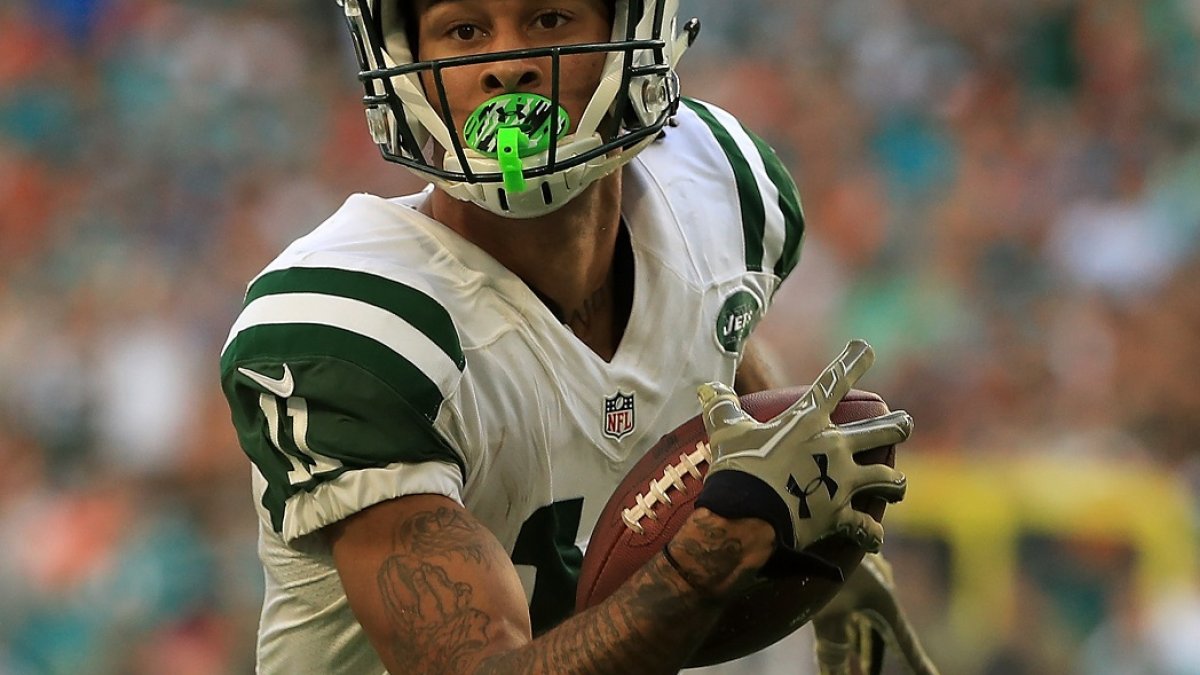(“Metrics that Matter” is a short feature that appears every Tuesday, Wednesday, and Saturday, highlighting a notable fantasy lesson to be learned from PFF’s advanced stats.)
Sometime in late 2014 I wrote my first ever fantasy football article. I was already writing baseball articles for a website, they needed more football writers, and I decided to give it a try. I had just one idea – a theory – and very little supporting evidence. My theory was this: when both are on the field at the same time, former-backup quarterbacks will lean heavy on a team’s former-backup receivers. My reasoning was that these players have an added chemistry due to how reps are split up in training camp and practices, where first-team (starting) quarterbacks throw most of their passes to first-team receivers, and second-team (backup) quarterbacks will throw most of their passes to backup receivers. So when a backup quarterback enters an actual game, he’ll lean heavily on the one guy with whom he has an added rapport (his fellow former backup). I dubbed this “the backup connection.”
This was the first football article I wrote, but it was also the first article I’ve ever had rejected by an editor. I didn’t blame my editor, because it wasn’t a very good article – but this one will be, I hope, because 2016 was the year of “The Backup Connection.” Okay, maybe not really, but we did have two really strong examples of this.
Jay Cutler started in Chicago’s first two games of the season before sitting out until Week 8 with an injury. Wide receiver Cameron Meredith didn’t play in either of these two games and didn’t get his first start until Week 5. Backup Brian Hoyer started in every game during Weeks 3-7. Hoyer already had some familiarity with Meredith, targeting him six times during the preseason (only Josh Bellamy had more preseason targets from Hoyer). In games Hoyer started, Alshon Jeffery and Meredith were Hoyer's clear top two targets. Jeffery caught 21 of 36 for 297 yards and Meredith caught 26 of 35 for 295 yards and a touchdown. What makes this more impressive for Meredith is that although Jeffery led Meredith and the team in targets by one, he also ran 63 more total routes than Meredith during this stretch.
We saw something similar with Matt Barkley and Meredith as well. Meredith accounted for 24 percent of Barkley's total attempts, while the next-closest receiver accounted for only 14 percent. I’m not sure how much I want to buy into this, however, as Barkley was a late signing by the Bears (September), so I’m not sure how much practice time they got together. Additionally, Zach Miller was absent for all six of Barkley’s starts and Jeffery played in only three.
Another example of the backup connection was Bryce Petty to Robby Anderson for the Jets. Anderson was Petty's most-targeted receiver during the preseason, catching five of 10 passes for 152 yards (next-closest had 56 yards) and two touchdowns. Anderson wouldn’t earn his first start until Week 4, while Petty didn’t until Week 10. When playing with Fitzpatrick, Anderson accounted for 9.7 percent of his total attempts, and 9.5 percent of his total yardage. When playing with Petty, Anderson accounted for 25.6 percent of his total attempts and 38.6 percent of his total yards. During the four games Petty played on the majority of his team's snaps, Anderson averaged 8.8 targets per game and 15.0 fantasy points per game.
Here are some additional examples of this (from my 2014 article):
- In 2014, Teddy Bridgewater didn’t start until Week 4 and Charles Johnson didn’t see the majority of his team’s snaps until Week 11. Weeks 11-17, Johnson led the team in targets with 43 (next-closest had 32) and yards with 416 (next-closest had 283).
- In 2013, neither Jarrett Boykin nor Jordy Nelson missed a single game. Aaron Rodgers threw 316 passes that season, and Matt Flynn threw 200. With Rodgers at the helm, Nelson saw a 23.5 percent target market share, compared to Boykin's 8.2 percent. Under Flynn, Boykin saw an 18.7 percent target market share, compared to Nelson's 14.5 percent.
What does this mean?
Well, to be honest, I’m not really sure. At the end of the day, this is just a theory, and not one we tried very hard to test. I really only explained an idea and then laid out four pieces of circumstantial evidence.
I talked about this theory quite a bit last season during the year, and made a good amount of money on Meredith and Anderson’s near minimum-priced salaries in DFS. From a DFS perspective, I’d say to keep your eye on possible “backup connection” scenarios once a starting quarterback goes down. Though, one note: I likely wouldn’t assume a special connection was likely without at least a one- or two-game sample supporting this. In season-long, I’m not sure how much this matters other than perhaps we should be more skeptical of Meredith and Anderson’s 2016 numbers.



 © 2025 PFF - all rights reserved.
© 2025 PFF - all rights reserved.